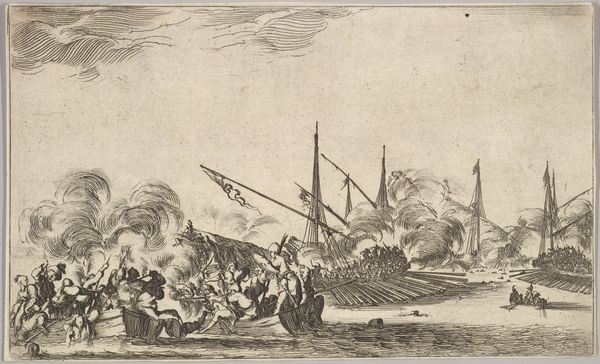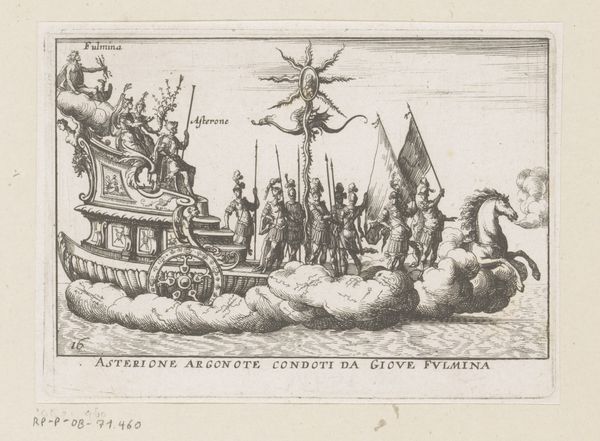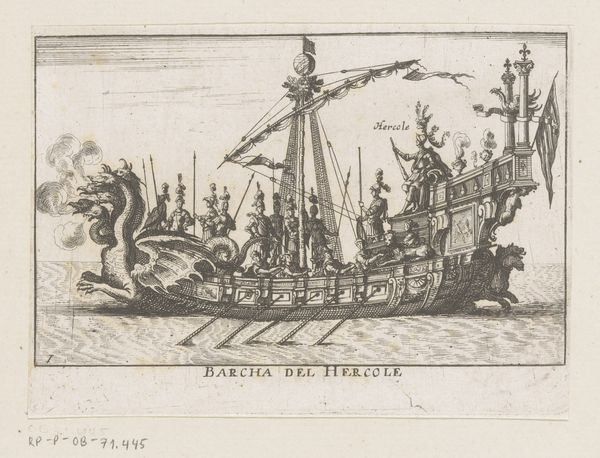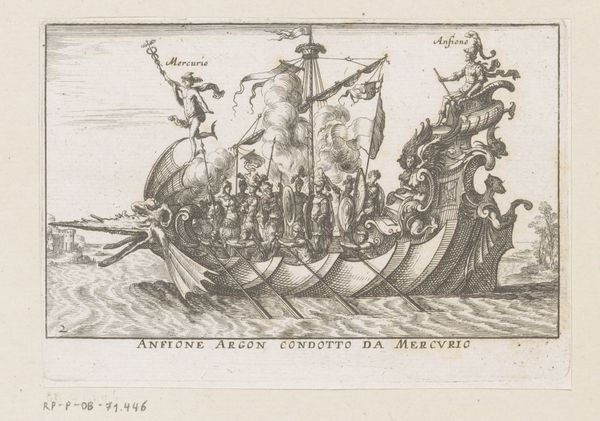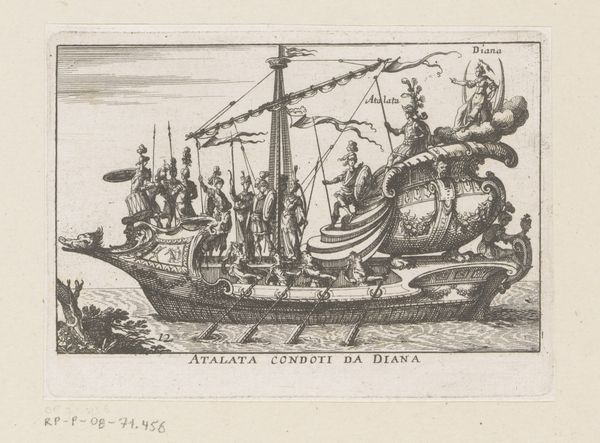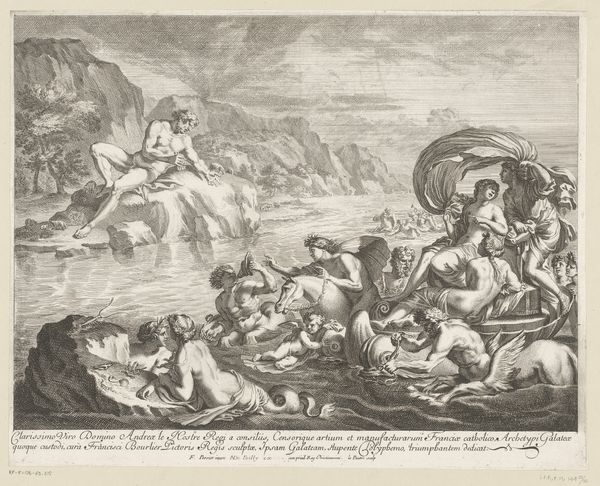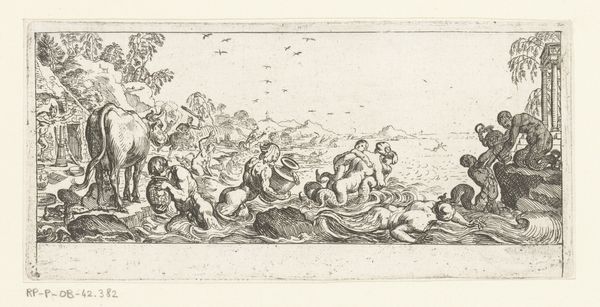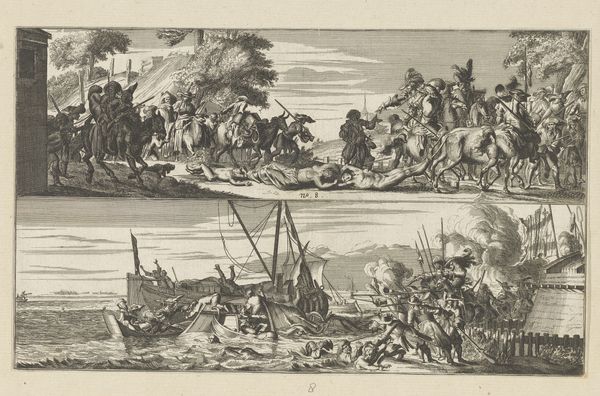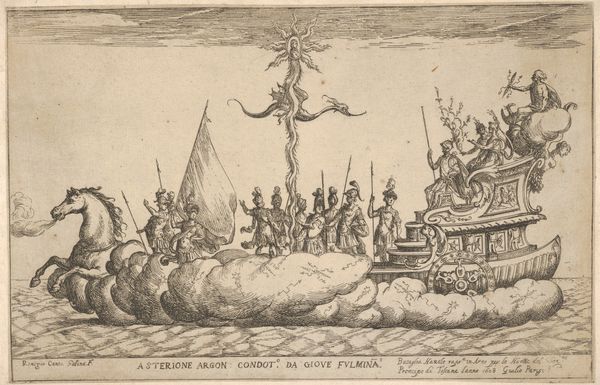
Plate 16: Ship of musicians with the sea god Claucus and tritons (Barcha di musici rapra Clauco dio marino e Tritoni), from the series 'The magnificent pageant on the river Arno in Florence for the marriage of the Grand Duke' (Le Magnifique carousel fait sur le fleuve de l'Arne a Florence, pour le mariage du Grand Duc), for the wedding celebration of Cosimo de' Medici in Florence, 1608 1664
0:00
0:00
drawing, print, engraving
#
drawing
#
allegory
#
baroque
#
ship
# print
#
figuration
#
cityscape
#
engraving
Dimensions: Sheet (Trimmed): 3 1/4 × 4 13/16 in. (8.3 × 12.2 cm)
Copyright: Public Domain
Editor: Here we have "Plate 16: Ship of musicians with the sea god Claucus and tritons," an engraving from 1664 made for the wedding celebration of Cosimo de' Medici in Florence in 1608. The sheer density of figures and ornamentation is remarkable. How do you interpret the composition? Curator: The artist, though anonymous, demonstrates a clear mastery of Baroque aesthetics. Observe the complex layering of forms and the intricate details achieved through engraving. The artist uses line to create tone, shadow, and a palpable sense of texture, wouldn't you agree? Editor: Absolutely, I can see that. The hatching is very deliberate, giving a sculptural quality to the figures despite being a two-dimensional print. What do you think about the interplay between classical and mythological elements here? Curator: The intermingling of classical figures and mythological creatures generates visual interest and lends the piece its allegorical weight. The artist invites us to ponder how such elements harmonize or contrast within the structure of the overall composition. Editor: It does feel very harmonious overall. The sea creatures support and integrate with the upper figures seamlessly. There isn't a focal point per se, is there? Your eye dances all around. Curator: Precisely. There's an almost democratic distribution of visual weight across the scene, each element meticulously rendered and essential to the overall schema. This approach contributes to a sense of balanced harmony across the entire image, making the eye enjoy this intricate dance as you said before. Editor: I never thought about balance in such a busy picture! That's fascinating, thank you. Curator: The visual complexity encourages viewers to actively engage with the print's structure, discovering the calculated relationships. I find that consideration quite stimulating, don't you?
Comments
No comments
Be the first to comment and join the conversation on the ultimate creative platform.

